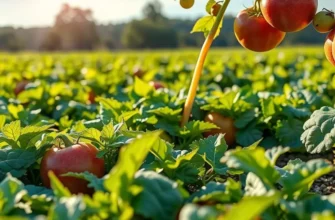Barbecues are a beloved summer tradition, yet they can pose food safety risks if not handled properly. From marinating to cooking and storing leftovers, practicing safe food management is essential to prevent foodborne illnesses. This guide offers straightforward, actionable tips to ensure a delicious and safe barbecue experience while minimizing waste.
Preparing for a Safe Barbecue

A successful barbecue starts before you even light the grill. Preparing food safely is essential to ensure your gathering is enjoyable and free from foodborne illnesses. Here, you’ll find effective practices for marinating, preventing cross-contamination, and storing ingredients safely.
Marinating Mastery
Marinating can enhance the flavor of your meats and vegetables, but it must be done safely. Always marinate food in the refrigerator, not on the counter, to prevent bacterial growth. Use non-metal containers, such as glass or plastic, to avoid any chemical reaction that might alter the food’s flavor. If you use plastic bags, ensure they are sealed tightly. Never reuse marinades that have been in contact with raw meat unless they are boiled thoroughly, as this kills harmful bacteria.
Preventing Cross-Contamination
Avoiding cross-contamination is critical. This starts with using separate cutting boards for raw meats and vegetables. Ideally, have distinct color-coded boards for easy identification. Clean all cutting surfaces and knives with hot, soapy water after handling raw meat. When grilling, use separate utensils. A different spatula or tongs should be used for raw and cooked foods. This simple precaution helps keep bacteria from spreading from one food item to another.
Safe Storage Practices
Proper storage of ingredients is key to maintaining freshness. Keep raw meat separately in sealed containers or bags away from fruits and vegetables to avoid cross-contamination in the refrigerator. Follow the first-in, first-out rule: use older items before newer ones to minimize waste and the chance of spoilage. When transporting food, especially for an outdoor barbecue, use a cooler with plenty of ice packs to keep perishable items below 40°F (4°C). For more tips on reducing kitchen waste while ensuring food safety, you can explore low-waste cooking prep techniques.
Handling Raw Ingredients
Always wash your hands with soap and water before and after handling raw ingredients, particularly meat. For vegetables, rinse them thoroughly under running water to remove any residual dirt or pesticides. Peeling or scrapping may be necessary for certain produce, but always practice good hygiene to minimize the risk of contamination. When your barbecue includes sauces or dressings that are homemade, ensure they are kept cool and covered to maintain their integrity.
Barbecuing is not just about grilling; it involves carefully managing your ingredients and utensils to maintain a safe dining environment. With these preparation strategies, you can enjoy your summer barbecues without concerns about food safety.
Cooking and Storing Leftovers Safely

As barbecue season rolls around, mastering safe cooking and storage techniques ensures everyone enjoys the feast without unwelcome side effects. A critical first step is cooking meats to the right temperature, which kills harmful bacteria. Ground beef should reach a minimum of 160°F (71°C), while poultry requires 165°F (74°C). Steaks and pork chops are safe at 145°F (63°C) with a three-minute rest period.
Once your meats are perfectly grilled, handling them safely prevents contamination. Use clean serving plates and utensils for cooked foods, avoiding any contact with items that touched raw meats. This practice guards against cross-contamination, preserving your hard-earned meal’s safety.
After the barbecue winds down, the next step is efficient cooling and storage of leftovers, critical for minimizing waste and maximizing meal longevity. The key to preserving cooked food safely is rapid cooling. Leftovers should be refrigerated within two hours or, in hot weather above 90°F (32°C), within one hour. To fast-track cooling, divide large quantities into smaller portions and use shallow containers.
Proper storage extends the freshness of your delicious leftovers. Secure all items in airtight containers, significantly slowing spoilage. For those with a keen interest in sustainable practices, consider exploring eco-smart kitchen storage solutions to minimize environmental footprints while keeping food fresh.
When the time comes to enjoy your saved goodies, reheating them properly is crucial. Ensure your microwave or stovetop heats all foods to at least 165°F (74°C) until steaming. Stirring dishes halfway through can aid evenly distributed heat.
Finally, it’s essential to consume leftovers promptly. Most foods stored in the refrigerator are best eaten within 3-4 days. If you can’t finish them in this timeframe, consider freezing for later use, which can extend their life up to several months without compromising flavor.
By adhering to these guidelines, not only do you ensure safer barbecuing practices, but you also take meaningful steps toward reducing food waste. Implement these strategies at your next gathering to safeguard health and honor nature’s bounty.
Final words
Barbecuing can be enjoyable and safe with the right precautions in place. By adhering to safe food practices, such as proper marinating, cooking, and storing procedures, you can ensure a flawless culinary experience while minimizing waste. Keeping food safety top of mind allows you and your guests to relish every moment and every bite without concern for contamination. This summer, make the most of your barbecues by applying these tips and creating a delicious and safe feast for all.







